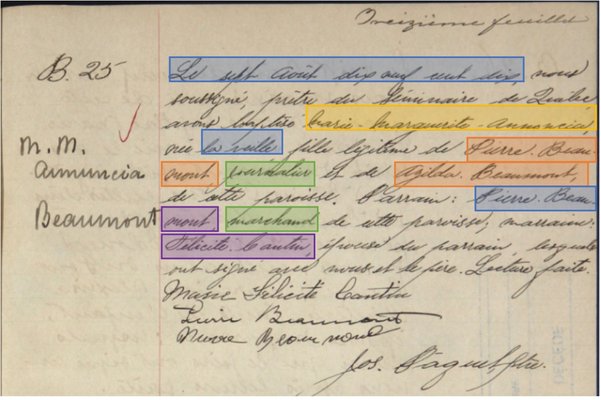This paper presents a complete workflow designed for extracting information from Quebec handwritten parish registers. The acts in these documents contain individual and family information highly valuable for genetic, demographic and social studies of the Quebec population. From an image of parish records, our workflow is able to identify the acts and extract personal information. The workflow is divided into successive steps: page classification, text line detection, handwritten text recognition, named entity recognition and act detection and classification. For all these steps, different machine learning models are compared. Once the information is extracted, validation rules designed by experts are then applied to standardize the extracted information and ensure its consistency with the type of act (birth, marriage, and death). This validation step is able to reject records that are considered invalid or merged. The full workflow has been used to process over two million pages of Quebec parish registers from the 19-20th centuries. On a sample comprising 65% of registers, 3.2 million acts were recognized. Verification of the birth and death acts from this sample shows that 74% of them are considered complete and valid. These records will be integrated into the BALSAC database and linked together to recreate family and genealogical relations at large scale.
Download the slides presented at ICDAR2023
